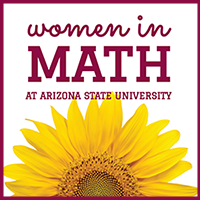Multiscale Models for Enhancing our Understanding of Tumor-Immune Dynamics and Combination Therapies
Increased understanding of molecular mechanisms that mediate the pathogenesis of cancers is leading to careful manipulation of these pathways and the development of new cell-specific approaches to cancer therapy. At the same time, advances in cancer immunotherapy have led to the reemergence of their clinical use and effectiveness. Using data-driven computational models is a powerful and practical way to optimize novel combinations of these two very different therapeutic options for clinical cancer treatment. This talk will highlight a suite of multiscale mathematical models designed to optimize targeted drug treatment strategies, alone and in combination with immunotherapy.
Bio
https://lsa.umich.edu/math/people/faculty/tjacks.html
Invited speaker
Trachette Jackson
Associate Vice President for Research - Strategic Partnerships and Inclusive Excellence
University Diversity and Social Transformation Professor of Mathematics
University of Michigan
Celebration of Women in Math Day
Friday, March 21
Registration: https://forms.thecollege.asu.edu/form/celebration-of-women-in-math-day
The Celebration of Women in Mathematics is a joyful opportunity for the mathematical community to celebrate women in mathematics. The day is part of an international initiative to inspire women everywhere to celebrate their achievements in mathematics, and to encourage an open, welcoming, and inclusive work environment for everybody. May 12 was the date originally chosen for this annual event, as it is the birthdate of Maryam Mirzakhani. Our school will be hosting our celebration on March 21, since May 12 is after ASU's spring semester ends.
Trachette Jackson will give the keynote lecture. She is the Associate Vice President for Research - Strategic Partnerships and Inclusive Excellence and University Diversity and Social Transformation Professor of Mathematics at the University of Michigan.
This year’s celebration will also include research lightning talks by graduate student and post docs, and a luncheon.
| 9:30am | Coffee break | WXLR A206 |
| 10:00am | Research Lightning Talks by Graduate Students and Postdocs | WXLR A206 |
| 11:00am | Invited talk by Trachette Jackson, University of Michigan | LSE 106 |
| 12:15pm | Luncheon (for guests registered by March 17) | Engrained patio (Memorial Union) |
| 1:30pm | Career informal discussion, hosted by AWM at ASU | WXLR A206 |
| 2:00pm | Sweet and Salty Reception, hosted by AWM at ASU | WXLR A206 and breezeway |

LIGHTNING TALKS BY GRADUATE STUDENTS AND POSTDOCS
Olivia Bruner - graduate student
Evidence of Set-Based Reasoning in a Transition-to-Proof Course
We explored Transition-to-Proof (TTP) students’ proof comprehension by analyzing written responses to proof intention and validation tasks. We examined students' use of set-based reasoning as they completed these tasks. Our analysis of 28 students’ written work found that students used set-based tools for logic to support their reasoning. We concluded that in these tasks students leveraged set-based reasoning for logic to make sense of the context and claim of the proof, supporting them in their overall proof comprehension.
Lydia (Lily) Gabric - graduate student
Addressing an antidiscrimination paradox: uncovering protected information
In recent years, many jurisdictions have implemented antidiscrimination regulations that require protected information to be excluded from insurance pricing calculations. With the rise of complex algorithms and modeling methods, insurers are facing the dual challenge of complying with evolving regulations while maintaining accurate pricing outcomes. In response, many studies have sought to define fairness criteria and developed discrimination-free pricing methods through probabilistic inference. However, these measures and frameworks generally require some level of protected information. In this talk, we propose the use of a hierarchical mixture model with latent protected variables that allows us to impute partial, or completely, unobserved discriminatory information. We demonstrate this modeling approach for a discrimination-free pricing framework with simulated count data.
Joan Ponce - Presidential postdoctoral fellow
Extreme geographic misalignment of healthcare resources and HIV treatment deserts in Malawi
Abstract: The Joint United Nations Programme on HIV and AIDS has proposed that human rights should be at the center of efforts to end the HIV pandemic and achieving equity in access to antiretroviral therapy (ART) and HIV healthcare is essential. We present a geospatial and geostatistical modeling framework for conducting, at the national level, an equity evaluation of access to ART. We apply our framework to Malawi, where HIV prevalence is ~9%. Access depends upon the number of available healthcare facilities (HCFs), the travel times needed to reach these HCFs, the mode of transportation used (walking, biking, driving) and the supply-to-demand ratio for ART at the HCFs. We find extreme inequities in access to ART. Access maps show striking geographic patterns, revealing clusters of communities with very low or high levels of access. We discover that an extreme geographic misalignment of healthcare resources with respect to need has generated a new type of medical desert: an HIV treatment desert. Around 23% of people living with HIV reside in deserts where they have to walk up to 3 h to reach HCFs; in 2020, these HCFs only received 3% of the national supply of ART.
Jianping Pan - Postdoctoral research scholar
Let's count! -- Combinatorial approach to Geometry
Since the 19th century, mathematicians have started to investigate enumerative properties of the intersections of curves and hypersurfaces with the work of Hermann Schubert. We will count some of them in different ways including multiplying polynomials and filling numbers in boxes.
Hanh Vo - Postdoctoral research scholar
About Teichmüller theory.
The original setting of Teichmüller theory is complex analysis. It can be studied from the perspective of the representation theory of the fundamental group of the surface in a Lie group G, most notably G = PSL(2,ℝ) and G = PSL(2,ℂ). We will discuss an idea about it.
Featured speaker:
Trachette Jackson
Associate Vice President for Research - Strategic Partnerships and Inclusive Excellence
University Diversity and Social Transformation Professor of Mathematics
University of Michigan
